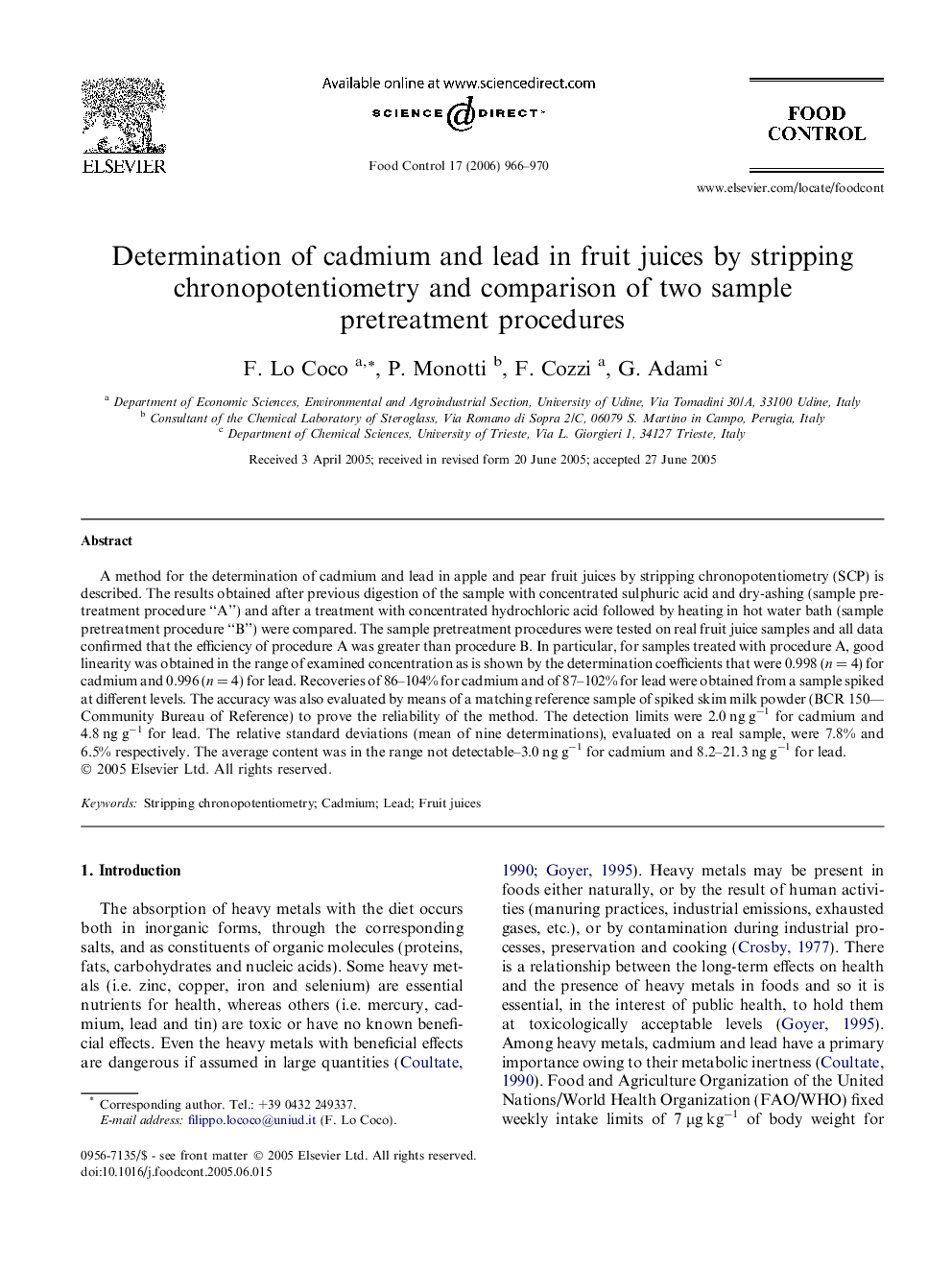| Article ID | Journal | Published Year | Pages | File Type |
|---|---|---|---|---|
| 4560933 | Food Control | 2006 | 5 Pages |
A method for the determination of cadmium and lead in apple and pear fruit juices by stripping chronopotentiometry (SCP) is described. The results obtained after previous digestion of the sample with concentrated sulphuric acid and dry-ashing (sample pretreatment procedure “A”) and after a treatment with concentrated hydrochloric acid followed by heating in hot water bath (sample pretreatment procedure “B”) were compared. The sample pretreatment procedures were tested on real fruit juice samples and all data confirmed that the efficiency of procedure A was greater than procedure B. In particular, for samples treated with procedure A, good linearity was obtained in the range of examined concentration as is shown by the determination coefficients that were 0.998 (n = 4) for cadmium and 0.996 (n = 4) for lead. Recoveries of 86–104% for cadmium and of 87–102% for lead were obtained from a sample spiked at different levels. The accuracy was also evaluated by means of a matching reference sample of spiked skim milk powder (BCR 150—Community Bureau of Reference) to prove the reliability of the method. The detection limits were 2.0 ng g−1 for cadmium and 4.8 ng g−1 for lead. The relative standard deviations (mean of nine determinations), evaluated on a real sample, were 7.8% and 6.5% respectively. The average content was in the range not detectable–3.0 ng g−1 for cadmium and 8.2–21.3 ng g−1 for lead.
